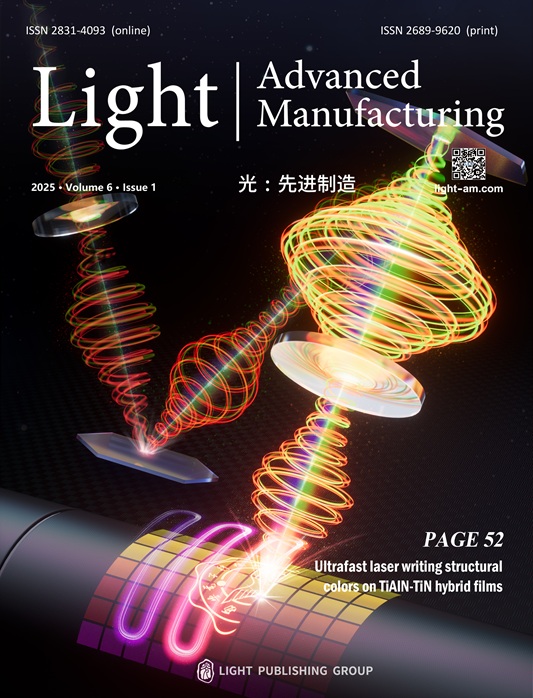-
The development of novel X-ray beam sources such as large-scale advanced synchrotron X-ray beams and X-ray free-electron lasers has enabled the discovery of new materials, processes, and new fields, as demonstrated by numerous examples in the past several decades1,2. Many more examples are described in recent reviews3,4. These discoveries are made possible because these new X-ray sources can produce brighter, more coherent, and ultrafast bursts of X-rays. These new X-ray sources have promoted other fields and technologies. For example, it is the low divergent, diffraction limited X-ray beam that helps advance X-ray ptychography. In addition, these new X-ray beam sources have promoted the development of new optics such as mirrors with superior qualities5.
As stated in an article by Koehlenbeck et al. published in a recent issue of LSA6, the intensity of X-rays delivered by these new X-ray sources surpasses Moore’s law. At the time of their submission, the highest intensity was 1020 W/cm2, which was increased to 1022 W/cm2 while the manuscript was reviewed, and the focal spot size is now reduced to a single-digit nanometer7. As the X-ray focal spot sizes continue to shrink, and as the divergence of the diffraction-limited X-ray beams reach microradians and even sub-microradians, to fully take advantage of the superior qualities of these new X-ray sources and to enable the development of next generation X-ray sources, as recognized by Koehlenbeck et al., one must overcome the X-ray beam instabilities, from the current microradian level to possibly below 100 nanoradians during the experiment.
This challenge has been recognized by others as well, as the importance of cavity alignment of X-ray optics in X-ray free-electron laser oscillators and X-ray free-electron laser regenerative amplifiers has been discussed in the literature8. The alignment requirement for the former is more stringent, but even the latter still demands sub microradian alignment stability, as Koehlenbeck et al. state in their current publication. Although many degrees of freedom may need to be considered, a demonstration of several degrees of freedom essential to the alignment may be practically achieved. Koehlenbeck et al. selected three such degrees of freedom.
Koehlenbeck’s work demonstrates an experimental solution to address this challenge by combining optical interferometric measurements or metrology with real-time control of X-ray optics to reduce the parasitic motion errors from several microradians to a fraction of a microradian, therefore meeting the requirements for several technical needs. The control was synchronous and continuous, and on the order of milliseconds determined by the bandwidth of the DAQ cards. Beyond parasitic motion errors, other factors that can cause X-ray beam instabilities include ground movements and thermal instabilities9. All of these require active control of the X-ray optics involving long X-ray paths of the order of tens to hundreds of meters, a length scale required by next generation X-ray sources and experiments such as regenerative X-ray amplifiers.
The interferometric method Koehlenbeck et al. used has been developed to detect gravity waves in space10. The overall design and implementation of their experiment is shown in their work. The optical interferometric metrology is integrated in the simulated X-ray laser cavity that includes several X-ray reflectors/mirrors, which form half of a tunable X-ray laser cavity. As demonstrated elsewhere, a four-reflector cavity can effectively be used as an X-ray laser cavity11. The system developed by Koehlenbeck et al. therefore can be used in actual experiments or infrastructures.
Using the results from the optical interferometric measurements, X-ray optics are then adjusted in real time to reduce deviations. The new system they developed reduced the jittering or parasitic motion in the optics from approximately 5 microradians down to less than 0.25 microradians. The concept of using optical interferometry to assist the pointing stability of X-ray optics is therefore successfully demonstrated in their work.
Their current work can make new coherent X-ray laser sources reach their ultimate potential by maintaining their capabilities in diffraction-limited, high flux, high brightness, coherent X-ray beam sources, just like adaptive optics (AO) may help with12.
As Koehlenbeck et al. have shown in their work, the demand for X-ray beam stability can be successfully addressed for the development of new X-ray beam sources and applications. Artificial Intelligence (AI) may help to further improve the alignment and solve other potential problems13–16. This field of active and precision optical alignment is entering an era of achieving unprecedented nanoradian and picometer precision, and many new discoveries and advancements are expected in the foreseeable future.
HTML
-
We would like to thank Professor Peng Xi for useful suggestions.






 DownLoad:
DownLoad: